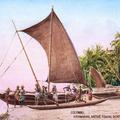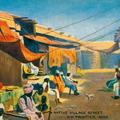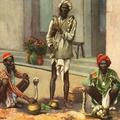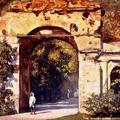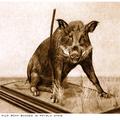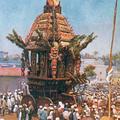Udaipur City. View of the palace.
[Original caption] Udaipur City. View of the Palace. Udaipur is the marvelous picturesque capital of the state of Mewar founded in the 16th century. The city is surrounded by a bastioned wall, protected on the W. by a beautiful lake. N. and E.



